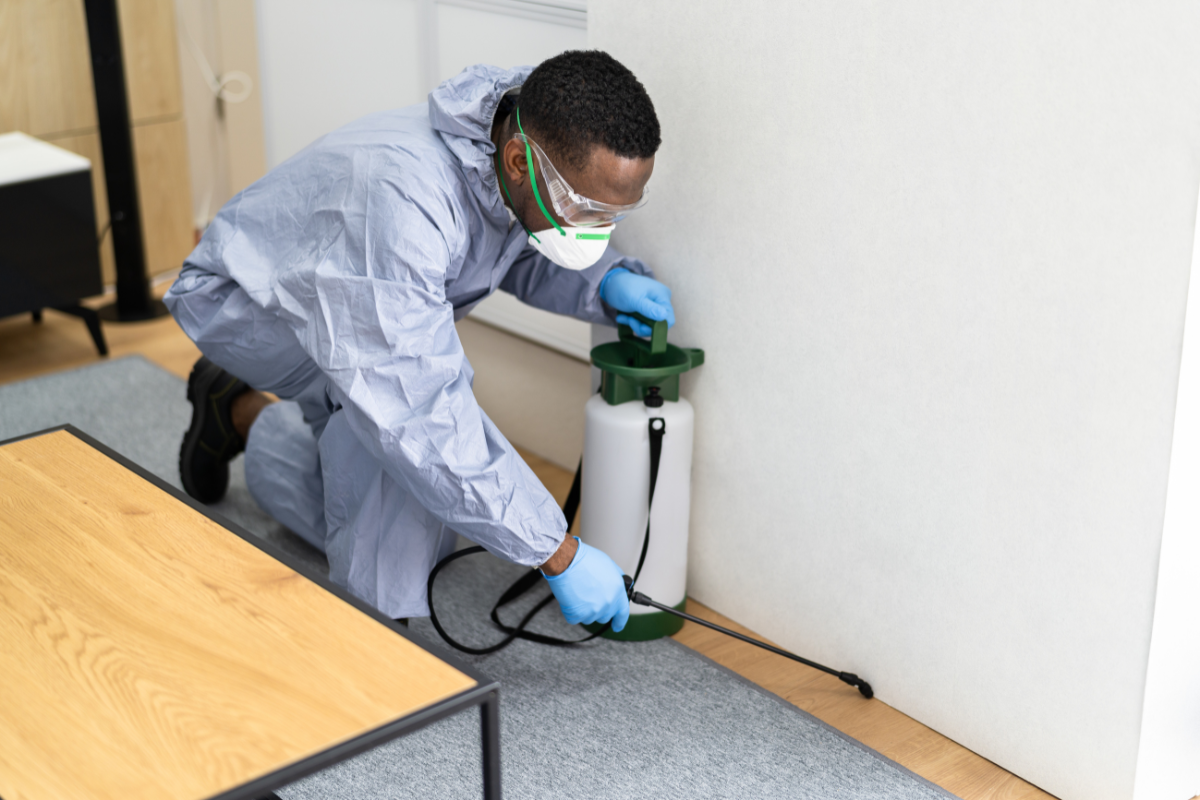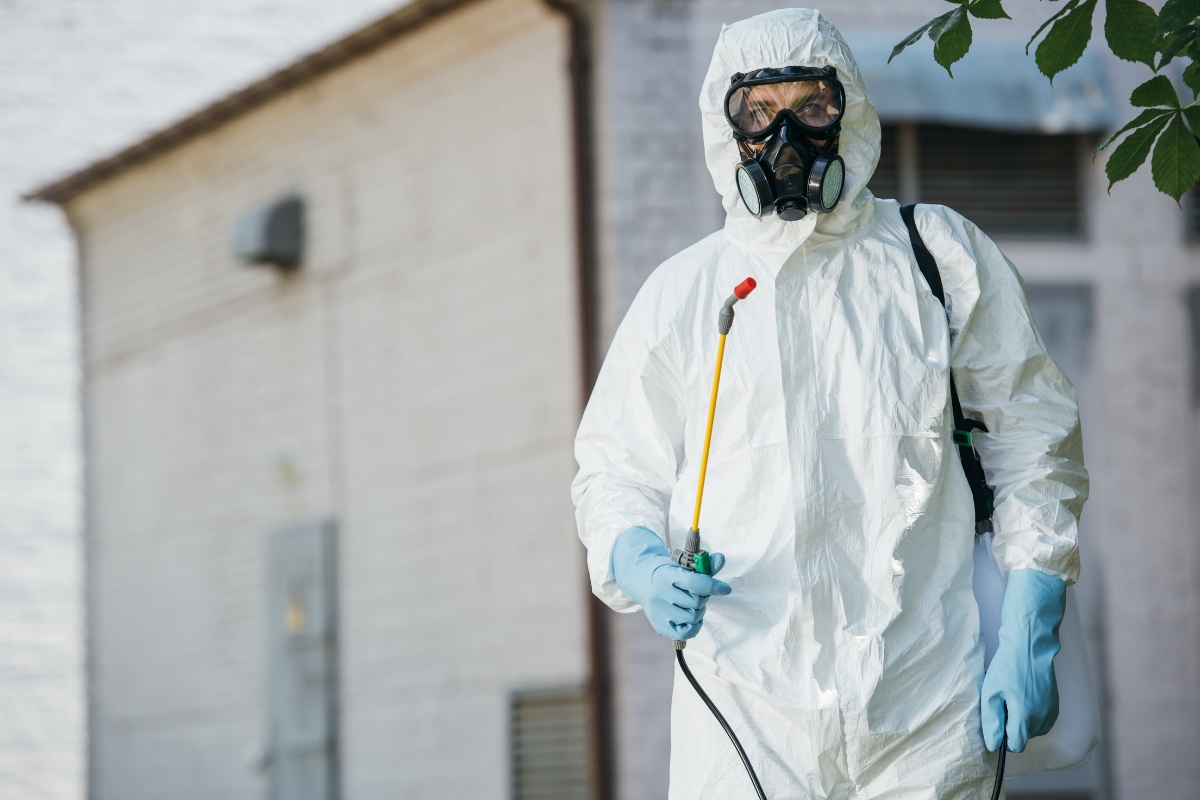


Landlords rarely think about pests until a tenant calls about droppings behind the stove or a wasp nest that makes the balcony unusable. By then, the stakes are high. Infestations cost money, upset tenants, and can https://juliuslmgg289.raidersfanteamshop.com/the-truth-about-organic-pest-control-exterminator-insights trigger health department citations, rent abatement claims, or court-ordered repairs. The law expects landlords to keep rental housing habitable, which includes keeping pests at bay. The details vary by jurisdiction, but the principles are consistent enough to form a workable playbook.
This guide unpacks the legal standards, the practical allocation of duties between landlords and tenants, and the right way to hire and manage a pest control company. It also covers documentation, lease language, and how to navigate edge cases such as bed bugs, short-term rentals, and multi-owner buildings. The tone here is pragmatic because that is what keeps you out of trouble and your buildings healthy.
What habitability really means when pests show up
Habitable premises are safe, sanitary, and fit to live in. Courts and housing codes interpret that to include freedom from vermin that affect health or render parts of a unit unusable. Common offenders are rodents, cockroaches, bed bugs, fleas, ants, and certain birds and wildlife intrusions. Even pests that do not carry disease can push a property below legal standards if they proliferate or prevent normal use of kitchens, bathrooms, bedrooms, or entryways.
In most places, the implied warranty of habitability applies regardless of what your lease says. If a tenant’s actions cause an infestation, you still have to address the problem to restore habitability, then you may seek reimbursement. That sequence matters. Courts take a dim view of landlords who delay service while arguing about blame.
A practical rule of thumb: if the pest issue is structural or building-wide, it is your responsibility. If it is isolated and clearly tied to a tenant’s misuse, you may bill them after you remediate. The burden of proof often lands on the landlord to show tenant cause, which means documentation is not optional.
Who pays, who acts, and when
Timelines drive outcomes. Health codes often require prompt action, and delays turn manageable calls into legal claims. For routine pests discovered during a turnover or inspection, schedule treatment immediately and verify entry access. For active infestations reported by a tenant, acknowledge the report the same day and get a pest control service out within a few business days, faster for rodents, bed bugs, or anything that risks bites or disease.
Responsibility for costs typically follows three patterns:
- The landlord pays for pests that arise from building conditions: exterior gaps, foundation cracks, aging trash chutes, shared laundry rooms, roof or attic openings, plumbing chases, or adjacent units passing pests laterally. The tenant pays if the infestation stems from their conduct: chronic food storage problems, failure to take out trash, keeping unauthorized pets that introduce fleas, or refusing reasonable pest-prep steps before scheduled treatment. You still arrange service to protect other residents and mitigate damages, then document and seek reimbursement through the lease or security deposit rules. In multi-unit buildings, the landlord almost always pays for common-area pests and for any infestation that spreads between units, even if one unit started it, because you control building systems and access to common walls. You may allocate costs internally later, but the duty to remediate quickly is yours.
Some localities make bed bugs a special case, with clear statutes requiring landlords to pay for inspections and treatment, plus rules on tenant cooperation and follow-up. Check your city and state requirements before you face your first bed bug call. If you own property in two jurisdictions, assume the stricter bed bug policy applies to you operationally, and train your staff accordingly.
Reading the lease the way a judge would
Strong lease language does two things. It confirms your duty to keep the property habitable, and it spells out tenant obligations that affect pest risks. Judges look for clarity, reasonableness, and compliance with local law. Overreaching clauses that shift all pest risk onto the tenant tend to fail.
The best leases explain that tenants must keep units clean, store food properly, remove trash regularly, report pests promptly, cooperate with treatment and preparation instructions, and allow reasonable entry for an exterminator service. Include language about follow-up visits, since egg cycles make single treatments ineffective for many pests. Reserve the right to charge the tenant for extra costs caused by refusal to prepare or grant access. Tie these clauses to notice and cure periods that match local access laws.
Attach or reference pest addenda for bed bugs and fleas. These addenda can specify inspection protocols before move-in, tenant declarations about prior bed bug exposure, and the process for reporting, inspection, treatment, and reentry. When a dispute arises, courts appreciate a paper trail that starts with a clear agreement and ends with documented compliance.
The practical difference between prevention and remediation
Most landlords focus on remediation because that is when the phone rings. Prevention is quieter but cheaper. The cost curve is not subtle. A quarterly service program for a 20-unit building might run a few thousand dollars per year, while a building-wide bed bug treatment can quickly exceed that, especially if heat treatments or multiple chemical visits are needed.
Prevention means sealing exterior gaps at utility penetrations, installing door sweeps, screening vents, maintaining positive pressure in hallways, and keeping trash areas clean and covered. It also means working with your pest control company to set monitoring devices in common areas and mechanical rooms, the places where infestations usually begin. Good vendors share digital logs and trend data. Take that seriously. If monitors show early cockroach activity in a basement, plan a building-wide baiting regimen before the problem reaches kitchens.
Unit turnover is your other prevention moment. Train maintenance staff to look for droppings, egg sacs, nesting material, suspicious stains on mattresses, and chew marks around pipes. If you find signs, do not just clean and paint. Bring in an exterminator company and solve the problem before advertising the unit.
Bed bugs: a legal and operational minefield
Bed bugs require a separate mention because they trigger more disputes than any other pest in residential rentals. They are hard to detect early, require multiple treatments, and breed litigation as quickly as they breed in baseboards.
Several states and cities require landlords to pay for bed bug inspections and treatments, give tenants written disclosures about bed bugs at move-in, and follow specific timelines for inspection after a complaint. Many also require tenants to cooperate with the pest control contractor’s prep instructions, including laundering, decluttering, and bagging items. Courts enforce both sides of this equation: landlords must act quickly and professionally, and tenants must follow prep steps to make treatment effective.
If a tenant alleges bed bugs, acknowledge immediately, provide preparation instructions, and schedule a licensed pest control service inspection within a few days. Do not self-treat with hardware store chemicals. Bed bugs laugh at cheap pyrethroids and spread when people move untreated items. If the inspection confirms activity, plan for at least two treatments, spaced to intercept new hatchlings. Where heat treatments are legal and feasible, they can shorten the timeline, but you still need follow-up monitoring.
Document everything: photos, inspection reports, prep notices, entry notices, and tenant confirmations. If tenants refuse access or fail to prepare, reschedule with written notice and flag potential cost recovery. But do not cancel the plan. Bed bugs migrate. Protect neighboring units by inspecting laterally and vertically.
Rodents, roaches, and the building envelope
Rodents and cockroaches reveal building conditions. If rats are entering, there is a hole, and if roaches keep showing up in clean units, the building needs baiting and sealing, not blame.
Start with the envelope. Inspect foundations for gaps larger than a pencil, especially where utility lines enter. Stuff with steel wool and seal with mortar or pest-resistant foam. Fit door sweeps and close daylight under doors. Screen attic and crawlspace vents. For mid-rise buildings, look for gaps in trash chutes and compactor rooms, and adjust cleaning schedules so food waste is not sitting overnight.
Inside units, look behind appliances and under sinks for penetrations around plumbing. A hole the size of a dime is an invitation. Seal it before a tenant moves in. If your pest control contractor sets bait or traps, insist on a map of set points and a plan to replace bait on a schedule. The good vendors track consumption and adjust placement. If yours does not, shop around.
Cockroaches demand a baiting strategy, not just sprays. Gel baits applied to harborages, combined with insect growth regulators, usually work within weeks when paired with sanitation. Roaches are shared problems in multi-unit buildings, so do not limit treatment to one unit. That mistake guarantees callbacks.
Choosing and managing a pest control company
The difference between a competent pest control service and a mediocre one shows up in your legal exposure as much as your pest counts. Licensing is baseline. What you want is a contractor that documents visits, explains treatment plans, and educates tenants without shaming them. Ask how they handle bed bugs, what products they use and why, and how they approach follow-ups. Listen for specifics: rotation of active ingredients to avoid resistance, integration of monitors, and building-level recommendations rather than unit-by-unit whack-a-mole.
You also want response time commitments, weekend or after-hours options for emergencies, and a clear escalation path. If your portfolio has elevators, steam lines, or commercial kitchens, the vendor has to understand those environments. For mixed-use buildings, confirm they can manage restaurant pests without driving problems into residential floors.
Price should reflect scope. Flat monthly retainers can work for routine monitoring and prevention, with time-and-materials for special infestations. For bed bugs, expect per-unit pricing with built-in follow-ups. Negotiate for digital service reports that include photos and barcoded devices where possible. These records become your evidence if a tenant claims neglect.
What to do the day a tenant reports pests
Here is a short, practical sequence that has kept many landlords out of court and their properties in good shape.
- Acknowledge the report in writing the same day, thank the tenant, and set expectations for next steps and timeline. Notify your pest control company and request the earliest available inspection, prioritizing bed bugs, rodents, and wasps or hornets near entrances or balconies. Provide preparation instructions if needed, tailored to the specific pest, and offer reasonable assistance for tenants who may struggle with laundry or decluttering. Issue legal entry notices for inspection and treatment, following local timelines and methods for notice and reentry. After service, share a plain-English summary of findings and next steps, including follow-up appointments and any tenant responsibilities.
This sequence looks simple, but the discipline matters. Tenants feel heard, you create a clear paper trail, and your pest control contractor has a framework that supports success.
Documentation that protects you when things go sideways
Most pest disputes are evidence problems. A tenant says you ignored the issue for months. You say you acted. The winner is the party with organized records.
Track dates of reports, acknowledgments, inspections, treatments, and follow-ups. Save all entry notices. Photograph entry barriers, such as triple-locked gates or blocked hallways. If a tenant refuses access or fails to prepare, capture it with time-stamped notes or photos, and reschedule immediately with new notices. When you complete repairs that address the root cause, such as sealing a pipe chase, log that work order and tie it to the pest case number.
If you use a property management platform, create a pest category with standardized fields. If you are small and use email and spreadsheets, adopt a simple naming convention and keep a single folder per unit incident. During turnover, add pest checks to your move-in and move-out forms. Consistency is your friend when memories fade and judges ask pointed questions.
The role of tenant education without crossing lines
Telling tenants to keep a clean home is not always effective, and handled poorly it can be offensive or discriminatory. Focus on specific behaviors tied to the pest at hand, and frame it as partnership. For example, ask for sealed bins for bulk rice and flour in units with pantry moths. Request limited storage under sinks where plumbing leaks and harborages often form. Offer simple traps for fruit flies, and coordinate with your exterminator service to supply bed bug interceptors that snap under bed legs.
Where language barriers exist, provide translated prep sheets or pictograms. If disabilities make prep steps unreasonable, collaborate on alternatives and provide more time. Reasonable accommodations are both humane and legally prudent.
Seasonal and regional realities
Pest pressure changes with climate and neighborhood. In dense urban areas, cockroaches and mice are perennial. In warm regions, ants and termites stress structures. In wooded suburbs, raccoons and squirrels target attics. Know the trends on your block. If a nearby property is under demolition, expect rats to go looking for new housing. If a restaurant downstairs changes ownership, revisit your shared trash protocols.
In hot summers, German cockroaches cycle faster, which shortens the interval between necessary follow-ups. During cold snaps, rodents test every gap. Plan staffing and vendor schedules around these cycles. A quarterly plan on paper that ignores seasonality will underperform in reality.
Short-term rentals, furnished units, and student housing
Turnover frequency and furniture change the risk profile. Short-term rentals and furnished units see more bed bug exposure because luggage and upholstered items act as vectors. Require protective mattress encasements, provide luggage racks, and schedule routine canine inspections if local law allows and budgets support it. In student housing, teach early. Move-in packets should explain trash schedules, food storage, and how to report pests. Coordinate with campus calendars, since mass move-ins often precede mass bug calls.
For furnished corporate rentals, inspect after every departure, not just monthly. Light, frequent checks catch small problems before they ruin a couch and a reputation.
Wildlife and the line between pest control and conservation
Birds, bats, and protected wildlife add complexity. Many jurisdictions restrict removal methods or timing, especially during nesting seasons. Do not improvise. Call a licensed wildlife specialist, not just a general exterminator. Expect to pay for exclusion work, such as installing chimney caps or netting on signage, and budget for regular inspections. If droppings accumulate in common areas, address them quickly to mitigate health concerns and slip hazards. Document permits where required.
Insurance, indemnity, and vendor risk
Insurance rarely covers routine pest control costs, but it may respond to claims of bodily injury or property damage tied to pests or treatments. Ask your broker to explain your coverage for tenant claims alleging bites, asthma aggravation, or contamination, and for claims arising from chemical misapplication. Require your pest control contractor to maintain general liability, pollution liability, and workers’ compensation, and to name you as an additional insured where appropriate. Get certificates on file and calendar renewals. If a technician over-applies a product and a tenant alleges injury, you want clean lines on defense and indemnity.
When tenants demand rent reductions or withhold rent
Pest conditions can justify rent abatement if they materially impair habitability. The size of the reduction depends on severity, duration, and your response. Judges often look at whether rooms were unusable and for how long. A week of kitchen-focused roach treatment with prompt response might not warrant abatement. Months of untreated bed bugs usually will.
If a tenant withholds rent, stay calm and stick to process. Keep treating, keep documenting, and consider a measured offer to reduce rent during active remediation. Courts appreciate landlords who act in good faith. If the tenant blocks access or refuses prep, record that fact. Many rulings allocate responsibility based on cooperation and promptness.
Working with small buildings and tight budgets
Owners of duplexes and fourplexes feel every invoice. The temptation to self-treat is strong. Resist it for anything beyond minor ant trails or fruit flies. The hidden cost of amateur rodent control is dead animals in wall cavities and repeated entries. For roaches and bed bugs, off-the-shelf sprays are a false economy and provoke resistance.
Spend on exclusion and sanitation first: seal holes, install sweeps, fix leaks, and manage trash. Then build a relationship with a reputable local pest control company that offers responsive service without padded schedules. Ask them what you can do in-house safely, and what should always be theirs. Good vendors welcome informed clients; they suffer when DIY efforts sabotage their treatments.
What good looks like six months from now
If you put these practices in place, your pest incident count should trend down and your response times should shorten. The building will have fewer points of entry, your tenants will know what to expect when they report issues, and your vendor will bring you patterns before they become crises. You will also have a living file of reports, treatments, repairs, and communications that tells a coherent story to anyone who asks, from city inspectors to small claims judges.
Pest control is not glamorous, but it is a core part of property management. Done right, it protects human health, stabilizes rent rolls, and reduces legal risk. The standard is not perfection. The standard is reasonable care, documented action, and a building that does not give pests a fighting chance.
Clements Pest Control Services Inc
Address: 8600 Commodity Cir Suite 159, Orlando, FL 32819
Phone: (407) 277-7378
Website: https://www.clementspestcontrol.com/central-florida